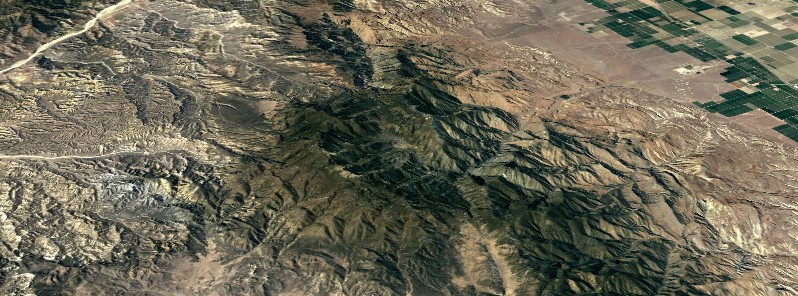Historic earthquakes discovered along San Andreas Fault

In a new study, USGS geologist Dr. Kate Scharer and her team excavated trenches across the San Andreas Fault – near Frazier Mountain in northeastern Kern County – to investigate the timing of sand, mud, and gravel deposits that were episodically ripped apart by earthquakes along the San Andreas Fault over the last 1200 years. They found evidence of 10 ground-rupturing earthquakes between 800 A.D. and the last rupture in 1857.
“In order to properly design infrastructure, like highways, water and power lines, so that it can survive the next earthquake, we study how often and how big prehistoric earthquakes were,” Scharer said.
“This work provides a new long record where we previously had very little data. The record shows that large earthquakes occurred near Tejon Pass on average every 100 years. Most appear to be quite large, between magnitude 7.0 and magnitude 7.5.”
The average time between earthquakes in the record studied is about 100 years.
Statistical evaluation of the timing between earthquakes reveals they are not random in time, but show a very weak periodicity. For example, some inter-earthquake periods are as short as 20 years, while at least one period was almost 200 years long. Such patterns are consistent with other locations along the San Andreas Fault where these prehistoric earthquake records are available.
The last earthquake to rupture the southern San Andreas Fault occurred in 1857. That earthquake ruptured a section of the fault that was about 210 miles long, with an estimated magnitude of M7.9.
Looking at the prehistoric record along the same stretch as the 1857 earthquake, Scharer and her colleagues find that since 1300 A.D. only one in eight of the past ruptures could have broken the same stretch of the fault.
From these data, it appears that most ruptures are slightly smaller than the 1857 event, about M7.5. Official USGS forecasts for California earthquakes, which included data from Frazier Mountain, forecast a 16% chance that a M7.5 or larger earthquake will occur on this section of the fault in the next 30 years.
Read also: USA: Human-induced and natural earthquake hazards in 2017
Abstract
Paleoseismic data on the timing of ground-rupturing earthquakes constrain the recurrence behavior of active faults and can provide insight on the rupture history of a fault if earthquakes dated at neighboring sites overlap in age and are considered correlative. This study presents the evidence and ages for 11 earthquakes that occurred along the Big Bend section of the southern San Andreas Fault at the Frazier Mountain paleoseismic site. The most recent earthquake to rupture the site was the Mw7.7-7.9 Fort Tejon earthquake of 1857. We use over 30 trench excavations to document the structural and sedimentological evolution of a small pull-apart basin that has been repeatedly faulted and folded by ground-rupturing earthquakes. A sedimentation rate of 0.4 cm/yr and abundant organic material for radiocarbon dating contribute to a record that is considered complete since 800 A.D. and includes 10 paleoearthquakes. Earthquakes have ruptured this location on average every ~100 years over the last 1200 years but individual intervals range from ~22 to 186 years. The coefficient of variation of the length of time between earthquakes (0.7) indicates quasi-periodic behavior, similar to other sites along the southern San Andreas Fault. Comparison with the earthquake chronology at neighboring sites along the fault indicates that only one other 1857-size earthquake could have occurred since 1350 A.D., and since 800 A.D., the Big Bend and Mojave sections have ruptured together at most 50% of the time in Mw ≥ 7.3 earthquakes.
Reference:
“Ground-rupturing earthquakes on the northern Big Bend of the San Andreas Fault, California, 800 A.D. to present” – Scharer et al. – March 2, 2017 – JGR Solid Earth (AGU) – DOI: 10.1002/2016JB013606
Featured image credit: Google

Commenting rules and guidelines
We value the thoughts and opinions of our readers and welcome healthy discussions on our website. In order to maintain a respectful and positive community, we ask that all commenters follow these rules.